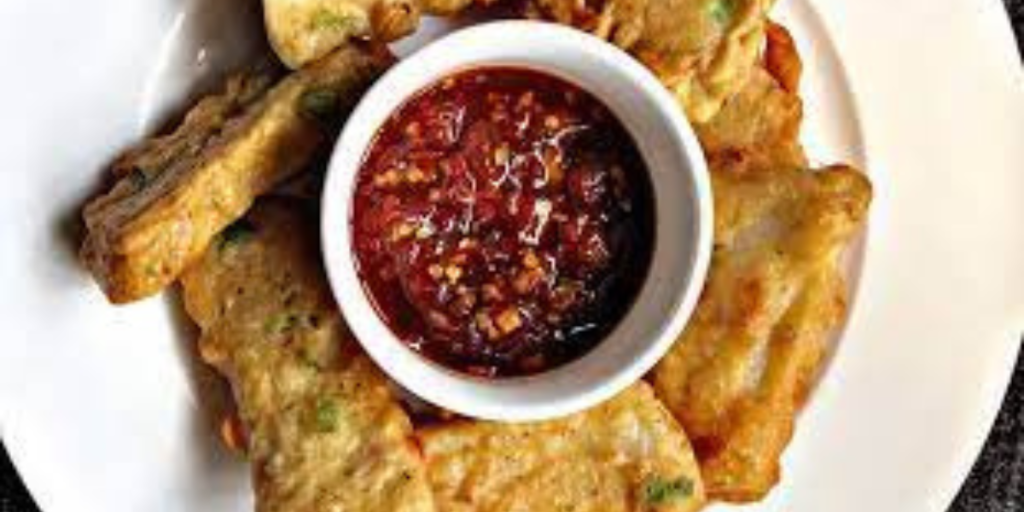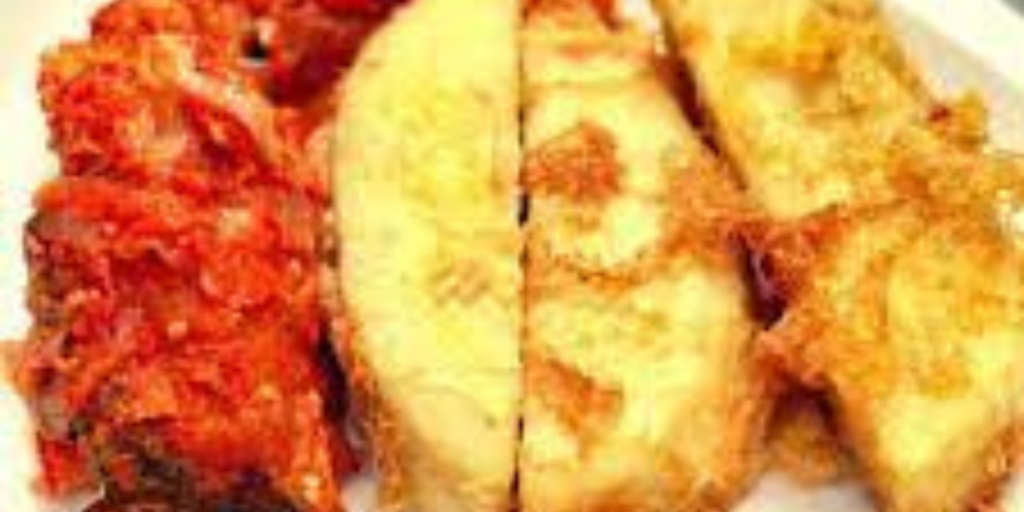Table of Contents
Yamarita, a cherished Nigerian dish, typically involves coating yam slices with flour before frying to achieve a crispy texture. However, for those following a gluten-free diet or looking to reduce their flour intake, there are alternative methods to create this delicious dish. In this article, we’ll explore how to make yamarita without flour, using innovative ingredients and techniques to achieve the same satisfying crunch and flavor.
Diving into the rich tapestry of Nigerian cuisine, one cannot overlook the tantalizing allure of Yamarita—a beloved dish deeply rooted in West African tradition. In the culinary landscape of 2024, as innovative twists and adaptations take center stage, the quest for creating Yamarita without flour emerges as a testament to both culinary ingenuity and cultural heritage.
In this culinary exploration, we embark on a journey to unravel the secrets of crafting the perfect Yamarita without the use of flour—a testament to the versatility and adaptability of Nigerian cooking. From selecting the finest yams to mastering the art of seasoning and frying, each step in this process is steeped in tradition and creativity, offering a delightful fusion of flavors and textures that captivate the senses and ignite the palate.
Join me as we delve into the heart and soul of Yamarita without flour, uncovering the nuances of technique and flavor that elevate this iconic dish to new heights. Whether you’re a seasoned cook or a curious novice, this definitive guide to making Yamarita in its flour-free form promises to inspire and delight, offering a taste of Nigerian cuisine that is as authentic as it is innovative.
1. Opting for Cornmeal or Cornstarch:
Instead of traditional flour, cornmeal or cornstarch can be used as a gluten-free alternative to coat the yam slices. Cornmeal provides a slightly gritty texture, while cornstarch yields a smoother finish. Whisk together cornmeal or cornstarch with your favorite spices and seasonings, such as salt, pepper, and garlic powder, to create a flavorful coating for the yam slices.
Egusi Soup Health Benefits in 2024
2. Utilizing Ground Nuts or Seeds In Your Yamarita:

For a nutrient-rich twist on yamarita, consider using ground nuts or seeds as a coating for the yam slices. Almonds, cashews, and pumpkin seeds can be finely ground in a food processor to create a crunchy, flavorful coating. Mix the ground nuts or seeds with spices and seasonings of your choice for added flavor and texture. This alternative not only provides a gluten-free option but also adds a dose of healthy fats and protein to the dish.
What To Eat With Semo Best suggestion in 2024
3. Incorporating Rice Flour or Chickpea Flour:

Rice flour and chickpea flour are two more gluten-free options that can be used to coat yam slices for yamarita. Rice flour produces a light and crispy texture, while chickpea flour adds a slightly nutty flavor. Both flours can be seasoned with herbs, spices, and a pinch of salt to enhance the flavor profile of the dish.
How to Make Yamarita: Best 2024 Recipe
4. Dipping in Egg Wash or Dairy-Free Alternatives:

To help the coating adhere to the yam slices, dip them in an egg wash or dairy-free alternative such as almond milk or coconut milk before applying the flour substitute. This step ensures that the coating sticks to the yam slices and forms a crispy outer layer when fried. Whisk together eggs or dairy-free milk with a splash of water until well combined, then dip each yam slice into the mixture before coating with the flour alternative.
How To Make Egusi Soup (fried method)
5. Frying or Baking for Crispy Perfection:

Once coated, the yam slices can be either fried or baked to achieve a crispy texture. Heat a skillet with a small amount of oil over medium-high heat and fry the coated yam slices until golden brown and crispy on both sides. Alternatively, place the coated yam slices on a baking sheet lined with parchment paper and bake in a preheated oven at 400°F (200°C) for 20-25 minutes, flipping halfway through, until crisp and golden. Both methods result in deliciously crispy yamarita without the use of traditional flour.
How To Make Semo And Egusi Soup Best Recipe
making yamarita without flour is entirely possible with a bit of creativity and experimentation. Whether you opt for cornmeal, ground nuts or seeds, rice flour, or chickpea flour as a coating for the yam slices, the result is a flavorful and satisfying dish that’s suitable for gluten-free diets and anyone looking to reduce their flour intake. So why not try this innovative twist on a Nigerian favorite and enjoy the crispy goodness of yamarita without the flour?
In conclusion, our journey into the realm of making Yamarita without flour has been a delightful exploration of culinary innovation intertwined with rich cultural heritage. As we reflect on the intricacies of selecting, seasoning, and frying yams to create this beloved Nigerian delicacy, we are reminded of the resilience and creativity inherent in traditional cooking methods.
Throughout our culinary odyssey, we’ve witnessed how the absence of flour does not diminish the flavor or appeal of Yamarita; instead, it presents an opportunity for inventive adaptations that stay true to the essence of the dish while offering a fresh perspective. From experimenting with alternative coatings to refining frying techniques, each step in the process has been a testament to the adaptability and ingenuity of Nigerian cuisine.
Moreover, in the dynamic culinary landscape of 2024, Yamarita without flour stands as a shining example of the enduring relevance and versatility of traditional dishes. Whether enjoyed as a comforting snack, a hearty meal, or a festive indulgence, its ability to bring people together and evoke a sense of shared cultural identity remains unrivaled.
As we bid farewell to our culinary voyage, let us carry forward the lessons learned and the flavors savored, embracing the spirit of innovation and tradition in our culinary endeavors. Whether we’re recreating cherished recipes or pioneering new culinary frontiers, may the essence of Yamarita—its rich history, vibrant flavors, and communal spirit—continue to inspire and nourish our culinary imaginations for generations to come.





















